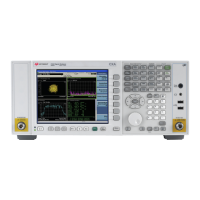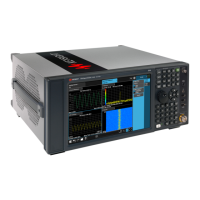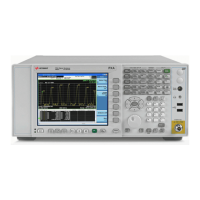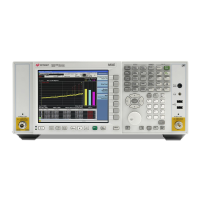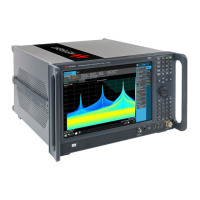197
Concepts
Time Gating Concepts
Time Gating Concepts
Introduction: Using Time Gating on a Simplified Digital Radio Signal
This section shows you the concepts of using time gating on a simplified digital
radio signal. The section on Making Time-Gated Measurements demonstrates time
gating examples.
Figure 15-3 shows a signal with two radios, radio 1 and radio 2, that are
time-sharing a single frequency channel. Radio 1 transmits for 1 ms then radio 2
transmits for 1 ms.
Figure 15-3 Simplified Digital Mobile-Radio Signal in Time Domain
We want to measure the unique frequency spectrum of each transmitter.
A signal analyzer without time gating cannot do this. By the time the signal analyzer
has completed its measurement sweep, which lasts about 50 ms, the radio
transmissions switch back and forth 25 times. Because the radios are both
transmitting at the same frequency, their frequency spectra overlap, as shown in
Figure 15-4 The signal analyzer shows the combined spectrum; you cannot tell
which part of the spectrum results from which signal.
Figure 15-4 Frequency Spectra of the Combined Radio Signals
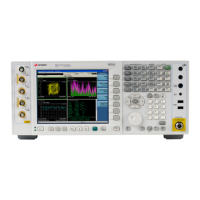
